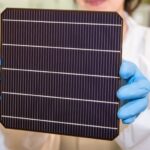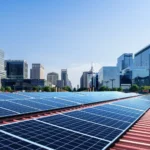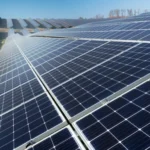Solar Rooftop Projects: Benefits of Intentional Islanding for Power Backup
Solar Rooftop Projects: Benefits of Intentional Islanding for Power Backup
Intentional Islanding in solar
Intentional Islanding in solar occurs when a solar rooftop system continues to supply to a load even when the grid is down; this can be very dangerous. Therefore, when the grid is down, the inverter, used in the rooftop system solar power plant for generating solar energy for home/industrial/commercial roof top, stops supplying power.
Intentional Islanding in solar is a technical requirement for inverters strictly mandated by CEA and MNRE. However, in view of frequent grid outages in most States, particularly in industry, commercial and institutional establishments, the rooftop system should be able to disconnect from the grid. Thus system should supply continuously solar power to the loads of such establishments using a battery storage system or in synergy with the backup diesel generator. Otherwise, the solar power will be wasted.
Intentional Islanding in Solar Option 1
Intentional Islanding in solar is possible through additional advanced features to be provided in inverters. The hybrid inverter which could work in the off-grid mode and continue to charge batteries with generated power. The inverter can continue to function in grid-tied mode in synergy with the larger backup diesel generator.
Intentional Islanding in Solar Option 2
Generally, for most industrial, commercial and institutional establishments, the second option is more feasible as they have large existing backup diesel generators for their loads. Such backup facilities already have the required safety features which prevent reverse flow to the grid.
Rooftop solar with the right type of inverter is, therefore, technically feasible even when the grid is down, and can also be more cost-effective compared to costlier diesel generation.
For harnessing the full potential of rooftop solar as envisioned by Government, CEA and MNRE should consider allowing such ‘intentional islanding in solar’ rooftop projects. They should formulate technical specifications of inverters with such additional advanced features for automatic and safe operation.
Ref: Grid Integration of Distributed Solar Photovoltaics (PV) in India, Prayas Energy Group, 2014
Suggested Articles

100 kW Solar Power Plant in Indore – Latest Cost, Subsidy & Payback Period
A 100 kW solar plant in Indore costs around ₹40–55 lakh in, offering annual savings of up to ₹10 lakh and a payback period of 4–6 years. Learn about installation, maintenance, and ROI to make your solar investment worthwhile.

Solar Inverters India: How to Choose the Best for Your Solar System
India’s solar market offers a wide range of inverters, making selection challenging. This guide explains key factors to consider, helping users choose the right inverter for residential, commercial, and industrial solar projects effectively.

Solar Rooftop Subsidy: Why It’s Time for a Change of Mindset
While solar rooftop subsidies help reduce upfront costs, true adoption requires a mindset shift. This guide discusses why businesses and homeowners should focus on long-term benefits, sustainability, and strategic planning beyond relying solely on incentives.

How Installers Cut Costs on Solar PV Module Mounting Structures
Solar PV mounting structures can significantly impact project cost. Explore how expert installers optimize design, materials, and labor to achieve safe, durable, and cost-effective solar installations

Perovskite: Future of Solar Cells
Discover how solar batteries store excess energy, maximize your solar system’s efficiency, and provide reliable power during outages. Learn about the types, benefits, lifespan, and maintenance tips to make the most of your solar investment.

UP Government Incentive: Stamp Duty Exemption for Solar Land
Uttar Pradesh offers stamp duty exemption on land for solar projects, encouraging investment and growth in renewable energy.

Solar for Industrial Use in India: Costs, Benefits & Energy Savings Explained
Solar for industrial use in India is rapidly transforming how factories manage energy costs and efficiency. This guide covers system sizes, costs, benefits, ROI, and how solar energy helps manufacturing units, warehouses, and industrial plants reduce power bills and ensure long-term sustainability.

1 MW Solar Plant Cost in Uttar Pradesh | A Complete Guide
Planning to install a 1 MW solar power plant in Uttar Pradesh? This guide covers 2025 pricing, subsidy details, ROI, and savings for industries and businesses.